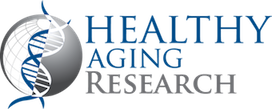
Healthy Aging Research
Open Access
ISSN: 2261-7434
+44-77-2385-9429

ISSN: 2261-7434
+44-77-2385-9429
Commentary - (2022)Volume 11, Issue 3
Haberler
Haberler
Haberler
Haberler
Haberler
Haberler
Haberler
Haberler
Haberler
Haberler
Haberler
Haberler
Haberler
Haberler
Haberler
Haberler
Haberler
Haberler
Haberler
Haberler
Haberler
Haberler
Haberler
Haberler
Haberler
Haberler
Haberler
Haberler
Haberler
Haberler
Haberler
Haberler
Haberler
Haberler
Haberler
Haberler
Haberler
Haberler
Haberler
Haberler
Haberler
Haberler
Haberler
Haberler
Haberler
Haberler
Haberler
Haberler
Haberler
The branch of gerontology known as "bio gerontology" studies the biological aging process, including its evolutionary roots and potential avenues for intervention. Bio gerontology is a word that was created by S. Rattan. It entails interdisciplinary investigation of the reasons behind biological aging as well as its results and mechanisms. According to bio gerontologist Leonard Hayflick, a person's natural average lifespan is about 92 years, and if people do not develop new ways to manage aging, they will be constrained to this longevity.
The goal of biomedical gerontology, sometimes referred to as experimental gerontology and life extension, is to prevent, delay, and even reverse the aging process in both people and animals.
Approaches to aging
The extent to which bio gerontologists concentrate on understanding how to delay the onset of aging-related disorders or increase longevity varies. The goal of the relatively young interdisciplinary discipline of geroscience is to extend a person's "health span" the amount of time they may go without developing a serious illness [1].
The philosophy of bio gerontologists is that aging is an illness in and of itself that needs to be treated directly with the final objective of making an individual's likelihood of dying, irrespective of their age. Contrary to the notion that the maximum life span cannot or should not be changed, this is true.
It is important to distinguish between bio gerontology and geriatrics, a branch of medicine that focuses on treating diseases that already present in older patients rather than aging itself.
Stochastic theories
According to stochastic theories of aging, the body's inability to repair its systems and delay the onset of aging is the result of minor changes that occur gradually over time. The buildup of damage over time causes injury to cells and tissues, which affects organ function [2]. The "wear and tear" theory, developed by scientist Dr. August Weismann, was the first to propose the idea of cumulative harm.
Wear and tear theories: According to wear-and-tear theories of aging, body parts like cells and organs degrade over time as people age. Both internal and external factors can contribute to wear and tear on the body, which can eventually result in an accumulation of injuries that outweigh its ability to heal [3]. Cells become less able to renew as a result of these internal and external assaults, which ultimately causes mechanical and chemical exhaustion. Chemicals in the air, food, or smoke are a few examples of assaults. Viruses, shock, free radicals, crosslinking, and high body temperatures are examples of additional assaults [4].
Accumulation: Peter Medawar was the first to put up the mutation accumulation idea as an evolutionary explanation for biological aging and the ensuing reduction in fitness. According to the theory, detrimental mutations that first manifest later in life, when reproduction has halted and future survival is becoming increasingly uncertain, are more likely to be unintentionally passed on to succeeding generations.
Natural selection won't be strong enough in this circumstance to regularly get rid of these mutations. According to Medawar, these mutations would eventually build up over time owing to genetic drift and result in the emergence of what is now known as aging.
Free radical theory: Free radicals are reactive molecules that are created by cellular and environmental activities. They have the ability to irreversibly harm cell components like the DNA and cell membrane. According to the free-radical theory of aging, this cumulative damage impairs cells' biological activity and has an effect on the aging process [5]. Rebeca Gerschman and associates made the initial argument that free radicals are hazardous agents.
DNA damage theories: One of the main contributors to agingrelated disorders has been DNA damage. The mechanisms used by cells for DNA repair, damage tolerance, and checkpoint pathways to prevent DNA damage determine the stability of the genome. Gioacchino Failla, a physicist, has suggested that accumulating DNA damage is a possible explanation for aging [6].
Physical scientist Leo Szilard rapidly formulated the theory. This hypothesis has evolved throughout time as new types of DNA damage and mutations have been identified [7]. Several theories of aging contend that DNA damage, whether it is accompanied by mutations or not, is the primary cause of aging.
Cross-linking theory: According to the cross-linking theory, aging is brought on by the accumulation of advanced glycation end products and other aberrant cross-links in aging tissues. The biological functions of proteins are disabled by crosslinking. The cross-linking of proteins is related to kidney disorders, heart enlargement, and hardening of connective tissue [8,9]. DNA crosslinking can cause replication mistakes, which results in malformed cells and raises the chance of developing cancer.
Citation: Kwon E (2022) Stochastic Theories and Approaches to Aging. Healthy Aging Research.11:146
Received: 07-Nov-2022, Manuscript No. HAR-22-21456; Editor assigned: 10-Nov-2022, Pre QC No. HAR-22-21456 (PQ); Reviewed: 25-Nov-2022, QC No. HAR-22-21456; Revised: 02-Dec-2022, Manuscript No. HAR-22-21456 (R); Published: 09-Dec-2022 , DOI: 10.35248/2261-7434.22.11.146
Copyright: © 2022 Kwon E. This is an open-access article distributed under the terms of the Creative Commons Attribution License, which permits unrestricted use, distribution, and reproduction in any medium, provided the original author and source are credited.